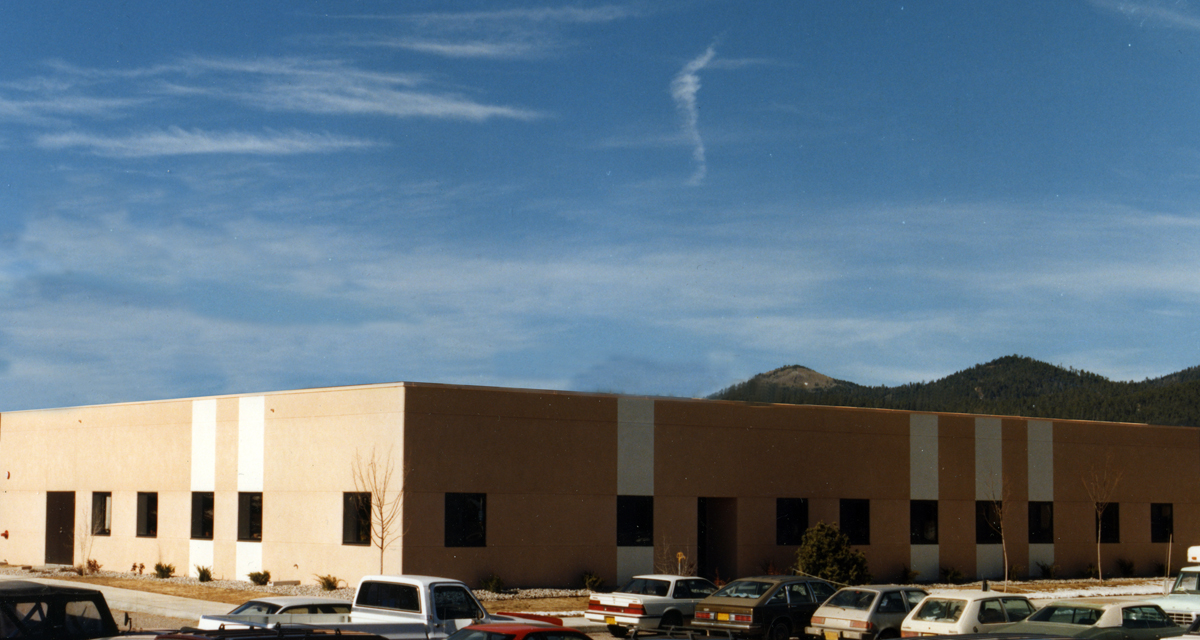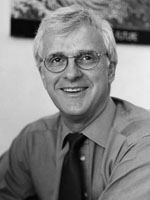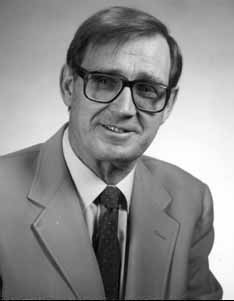 |
Center for Nonlinear Studies |
Click here for Robert Ecke recent document on the history of CNLS.

CNLS Audio Memory
This series of audio memories provides an insightful and dynamic glimpse into the lives of CNLS postdoctoral researchers. Each recording features a quick-fire, lightning-round format where postdocs share their personal experiences, research journeys, and challenges. By responding to a mix of prepared questions, they offer both a candid look at their academic and professional paths, as well as valuable advice for those navigating similar careers. The series aims to balance being informative and engaging, delivering a comprehensive perspective on the life of a scientist in just a few minutes per episode. Whether you are a fellow researcher or someone curious about the scientific process, this series promises to be both inspiring and enlightening.
- S1E1: Syed Shah
- S1E2: Jeremy Lilly
The Center for Nonlinear Studies was created by then Laboratory Director Don Kerr in 1980 in response to the emerging "nonlinear" science of solitons, dynamical systems and chaos and to the important historical part played by Los Alamos scientists, most notably the Fermi-Pasta-Ulam numerical simulations of equipartition of energy in a nonlinear lattice system performed in 1954. Some of the later fundamental breakthroughs in the area of nonlinear science were achieved at Los Alamos National Laboratory. One of those accomplishments, achieved in the late 1970's by Mitchell Feigenbaum, of LANL's Theoretical Division, built upon earlier work by Theoretical Division researchers Stan Ulam, Nick Metropolis, Paul Stein, and academic researchers John von Neumann, Mark Kac and Stephen Smale. Feigenbaum made a key discovery connecting the qualitative and quantitative scaling behavior of a simple mathematical equation and predicted that such behavior would be universal for chaoticsystems of a certain kind, specifically for period doubling. This discovery started a revolution in how complex systems are studied and understood. From these roots grew the Los Alamos Center for Nonlinear Studies.
 The first Center Director was Alwyn Scott (1981-1985) whose research area was biological solitons. Five Laboratory technical staff members - Alan Bishop (Condensed Matter and Statistical
Physics Group), David Campbell (Field Theory Group), Darryl Holm (Applied Mathematics Group), Mac Hyman (Applied Mathematics Group) and Basil Nichols (Applied Mathematics Group) - were
founding members of CNLS. A CNLS External Advisory Committee (EAC) was appointed in 1981, and the first Chairman was Mark Kac.
The first Center Director was Alwyn Scott (1981-1985) whose research area was biological solitons. Five Laboratory technical staff members - Alan Bishop (Condensed Matter and Statistical
Physics Group), David Campbell (Field Theory Group), Darryl Holm (Applied Mathematics Group), Mac Hyman (Applied Mathematics Group) and Basil Nichols (Applied Mathematics Group) - were
founding members of CNLS. A CNLS External Advisory Committee (EAC) was appointed in 1981, and the first Chairman was Mark Kac.
An active postdoctoral research program was central to the early CNLS research agenda. Erica Jen was the first CNLS postdoctoral fellow in 1981. Doyne Farmer joined later that same year, later becoming the first CNLS J. Robert Oppenheimer Fellow. Other early postdoctoral fellows included Robert Ecke (1983), Peter Lomdahl (1984), David Brown (1985), and Ioannis Kevrekidis (1986).
Because much of the early activity at the Center for Nonlinear Studies was computational in nature, a field aptly entitled "experimental mathematics," CNLS was an early pioneer at the Laboratory in UNIX workstations and networking. In 1989, CNLS moved from its temporary quarters in Theoretical Division to its new building where a computer machine room housed a suite of powerful computational platforms. A professional systems administrator was hired, and CNLS became a leader in large scale computing with strong ties to emerging capabilities in the Advanced Computing Lab with its novel Thinking Machines CM series parallel computers. Ever since, CNLS has helped pioneer new concepts in computing, including the design and construction of the Avalon Beowulf UNIX cluster in 1998. CNLS provides expert computer support to its many postdoctoral researchers as well as to CNLS research affiliates, visitors and summer students. This capability is a Laboratory resource that supports scientific excellence in theoretical and computational modeling.
 The organization of the Center evolved rapidly over its first 5 years. Alwyn Scott left after 4 years to pursue academic opportunities at the University of Arizona. David Campbell,
who had been a major driver of many CNLS activities, was appointed Director in 1985. Under Dr. Campbell, CNLS was run with the help of a small group of internal advisors who formed
the Executive Committee (EC). New members were added to the EC by first having them serve as the part-time Deputy Director for one year. In 1987, the Deputy became a permanent position,
and Gary Doolen was hired into that role. Also about that time, a new Complex Systems Group was formed in the Theoretical Division with former CNLS postdoc Doyne Farmer as its first Group Leader.
The organization of the Center evolved rapidly over its first 5 years. Alwyn Scott left after 4 years to pursue academic opportunities at the University of Arizona. David Campbell,
who had been a major driver of many CNLS activities, was appointed Director in 1985. Under Dr. Campbell, CNLS was run with the help of a small group of internal advisors who formed
the Executive Committee (EC). New members were added to the EC by first having them serve as the part-time Deputy Director for one year. In 1987, the Deputy became a permanent position,
and Gary Doolen was hired into that role. Also about that time, a new Complex Systems Group was formed in the Theoretical Division with former CNLS postdoc Doyne Farmer as its first Group Leader.
Another early addition to the CNLS charter was a Distinguished Scholar position named after the brilliant Polish-American mathematician and LANL staff member, Stanislaw Ulam. The Ulam scholar position was designed to attract outstanding scientists, each spending a year at the CNLS interacting with students, postdocs and technical staff members. The first Ulam Scholar in 1985 was James Murray, an Oxford applied mathematician well known for his work in mathematical biology, in particular, morphogenesis.
During the 1980s and into the early 1990s, David Campbell synthesized the 4 paradigms of 'nonlinear science': 1) dynamical systems and chaos, 2) pattern formation, 3) coherent structures, and 4) cellular automata, neural networks and genetic algorithms. These topics provided a sharp focus for CNLS research while the activities at CNLS included a strong postdoctoral research program, a small student program with a larger summer contingent, many influential and important annual conferences (partially funded until 2000 by the DOE/BES Applied Math Program) and workshops, and numerous visitors from academic, industrial, and government institutions.
Campbell’s tenure as Director saw significant increase in CNLS activity, size and influence including applications to important Laboratory programs such as synthetic metals and conducting polymers in Materials Science and Technology Division, speech recognition in Computational Division, neural network efforts in Applied Physics Division, porous-media simulations in Earth and Environmental Sciences Division using lattice-gas algorithms, etc. During the late 80s and early 90s, CNLS had a half-time Senior Scientist, Y.C. Lee, who participated in a wide spectrum of CNLS activities and had a large influence on significant research accomplishments.
Campbell left in 1993 during a period of change at the Laboratory that coincided with the end of the cold war. For several years, Gary Doolen, the CNLS Deputy Director, was the Acting Director with a series of temporary Deputy Directors including Robert Ecke, Erica Jen, and Ronnie Mainieri. CNLS maintained the status quo in that period until a new Director, Don Cohen of the Cal Tech Applied Math Department, was hired in 1996 by then T-Division Leader Dick Slansky. Don stayed only for one year but left an important long-term legacy through his hiring of a new Deputy Director, Charlie Doering, a former CNLS postdoc. Doering's broad scientific interests in mathematics, hydrodynamics and statistical physics and his familiarity with the historical roots of CNLS success made his tenure an important one for CNLS.
 In 1997, Hans Frauenfelder, who had recently retired after an outstanding academic career at University of Illinois and was working in the Physics Division on aspects of biophysics, was
hired as the fourth CNLS Director. Soon after the appointment of Fraunfelder, Doering left for a faculty position at the University of Michigan. The new Deputy Director was Shiyi Chen,
a former CNLS postdoc and Oppenheimer Fellow, who was attracted from his position as Research Staff Member at IBM T.J. Watson Research Center. Chen, whose calculation on the Los Alamos
CM-5 of fluid turbulence set the record for the largest in the world for almost a decade, brought great energy to the position and a renewed interest in hydrodynamics. During his time
as Deputy, Chen helped attract an outstanding group of postdoctoral fellows to CNLS including Misha Chertkov (Oppenheimer Fellow), Matthew Hastings (Feynman Fellow), Charles Reichhardt
(Feynman Fellow), Sergei Tretiak (Directors Fellow) and Zoltan Toroczkai (Directors Fellow), all of who became important Laboratory technical staff membera. Chen, who was appointed a
Laboratory Fellow in 1999, left in 2000 for an academic appointment at Johns Hopkins University (a position he now shares with an acting appointment as Dean of Engineering at Peking University).
In 1997, Hans Frauenfelder, who had recently retired after an outstanding academic career at University of Illinois and was working in the Physics Division on aspects of biophysics, was
hired as the fourth CNLS Director. Soon after the appointment of Fraunfelder, Doering left for a faculty position at the University of Michigan. The new Deputy Director was Shiyi Chen,
a former CNLS postdoc and Oppenheimer Fellow, who was attracted from his position as Research Staff Member at IBM T.J. Watson Research Center. Chen, whose calculation on the Los Alamos
CM-5 of fluid turbulence set the record for the largest in the world for almost a decade, brought great energy to the position and a renewed interest in hydrodynamics. During his time
as Deputy, Chen helped attract an outstanding group of postdoctoral fellows to CNLS including Misha Chertkov (Oppenheimer Fellow), Matthew Hastings (Feynman Fellow), Charles Reichhardt
(Feynman Fellow), Sergei Tretiak (Directors Fellow) and Zoltan Toroczkai (Directors Fellow), all of who became important Laboratory technical staff membera. Chen, who was appointed a
Laboratory Fellow in 1999, left in 2000 for an academic appointment at Johns Hopkins University (a position he now shares with an acting appointment as Dean of Engineering at Peking University).
As CNLS Director, Frauenfelder brought stability to CNLS with his outstanding scientific stature and brought his broader view of nonlinear science as the study of complex systems. The very interdisciplinary nature of CNLS not only continued under his leadership, it expanded as CNLS migrated towards biological physics. In 2000, Len Margolin was appointed as the new CNLS Deputy. Later followed in an acting role by Pieter Swart. In 2003, after 7 years as CNLS Director, Frauenfelder announced his desire to return to research and left for his current position as Senior Laboratory Fellow in the Theoretical Biology Group.
During the 1990s and earlier 2000s, CNLS' scientific activities continued at a high level with a continual eye on Laboratory applications. Among these were contributions to Nuclear Materials and Technology Division Pu-Ti safety issues, Accelerator Transmutation of Waste program efforts, prediction and quantification of uncertainty, applications of soliton theory to optical-fiber transmission, the Avalon Beowulf cluster, etc. The 2001 21st CNLS Annual Conference on Principles of Soft Matter, organized by David Egolf, Eli Ben Naim, and Robert Ecke was the largest in CNLS history with over 300 participants. This was topped several years later by the ground-breaking conference Networks: Structure, Dynamics, and Function that had over 350 attendees. Both conferences have had significant impact in shaping LANL and CNLS activities.
In 2004, Robert Ecke, an experimental condensed matter physicist from the Condensed Matter and Thermal Physics Group, was appointed as the 5th CNLS Director, first in an acting role and then as the permanent Director in 2005. As an early CNLS postdoc and long-time member of the CNLS Executive Committee, Ecke brought a thorough understanding of the roots of CNLS success. Zoltan Toroczkai became the new CNLS Deputy. Together, Ecke and Toroczkai began a program to revitalize CNLS, starting new projects in networks and in soft matter, restructuring the rotation of new projects into CNLS on a three-year cycle, and attracting new technical staff into the CNLS community. Toroczkai, an expert in statistical physics and the emerging networks area, was instrumental in developing the networks thrust in CNLS and attracting a large number of visitors and postdocs to this area. He left in 2006 for a faculty position at Notre Dame University. In 2007, William Hlavacek from the Theoretical Biology Group served as the Acting CNLS Deputy, helping establish a new project in biological complexity in CNLS. In 2008, CNLS selected Eddy Timmermans from the Theoretical Atomic, Molecular and Optical Physics Group as Deputy Director. Timmermans has a background in many-body theoretical physics with an emphasis on quantum systems including Bose-Einstein condensates. Eddy returned to a purely science career in 2010 at which time Mike Wall from the Computer, Computational, and Statistical Sciences group stepped in as Acting Deputy. In 2012, Aric Hagberg, from the Applied Mathematics and Plasma Physics group in T-Division, joined CNLS as the Deputy Director.
Following the retirement of Robert Ecke, in 2015, Angel E. Garcia, a world renowned theoretical and computational biophysicist was appointed the 6th and current CNLS Director. Garcia has made fundamental contributions to art of molecular dynamic simulation that have been widely adopted and used by the molecular dynamics community. He has 171 peer-reviewed publications. Garcia has provided sustained intellectual and scientific leadership in support of mission science through his leadership of CNLS. Shortly after Garcia joined CNLS, in 2016, Enrique Batista, from the Physics and Chemistry of Materials group in T-Division, became the new and current Deputy Director.
Another key development in CNLS in the last several years is a professional support staff that serves the Center's postdoctoral associates, students, visitors, and Laboratory technical staff. The center administrator is Jennie Harvey, the visitor liaison is Amanda Martinez and the conference coordinator is Leah Bulnes. In addition to providing outstanding support for CNLS activities and personnel, CNLS administrative staff assists staff across the Directorate for Theory, Simulation and Computing as well as in other parts of the Laboratory, particularly in the area of conferences, workshops and visitors. Computer administration is expertly supplied by Donald Thompson who in addition to supporting our local Unix network and compute clusters, develops novel computation platforms customized to individual science needs.
Today, CNLS has a broad portfolio of research including the following LDRD-supported three year projects: 1) Multiscale Modeling of Biological Systems; 2) Optimization and Physics Inspired Machine Learning Approaches; 3) The Dynamics of Systems Far From Equilibrium; and 4) Theory and Computation on Quantum Systems. The Center is actively involved in helping build scientific capability in materials, information science and technology, quantum science, biological physics, and complex systems. By merging the best science from external communities with pressing internal priorities and exciting problems motivated by national missions, CNLS provides a vital and active interdisciplinary resource for the Laboratory and the Nation. With over 30 postdoctoral fellows including three prestigious Oppenheimer Fellows and a Metropolis Fellow, all of whom are associated both with CNLS and with Technical Staff in a Laboratory Group, CNLS has one of the largest concentrations of interdisciplinary theory and simulation research efforts in the world. Entering its fourth decade, CNLS continues its long tradition of intellectual excellence, new staff recruitment, and the nurturing and development of new scientific directions and opportunities.
| Operated by the Triad National Security, LLC
for the National Nuclear Security Administration
of the US Department of Energy. Copyright © 2003 LANS, LLC | Disclaimer/Privacy |